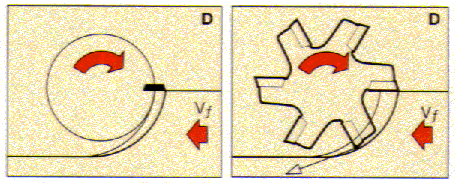
Ms. Jewel
Leave a message
Ms. Jewel
Leave a messageGeneral concept
roughing
Roughing is the purpose of quickly cutting the blank allowance. In roughing, a large feed and a maximum depth of cut should be used to remove as much of the chips as possible in a shorter period of time. Roughing requires less surface quality. The blunt standard of the tool is generally a significant increase in the cutting force, that is, the wear width VB of the subsequent flank is standard.
finishing
The main consideration in finishing is the surface quality of the workpiece rather than the amount of chips. A small depth of cut is usually used for finishing. The secondary cutting edge of the tool often has a special shape, such as a wiper. Depending on the machine tool used, the cutting method, the workpiece material and the tool used, the surface roughness can be reached at a level of Ra1.6 μm, and even under excellent conditions, Ra can be achieved at 0.4 μm.
The amount of wear on the flank of the tool during finishing is no longer the main criterion, it will give way to the surface quality of the workpiece.
2. Milling method
Climb milling
The component of the cutting speed of the cutting point in the feed direction in the feed direction coincides with the direction of the feed speed.
Climb milling is a processing method often used to obtain good surface quality. It has the advantages of small flank wear and smooth running of the machine tool, and is suitable for processing high alloy steel under good cutting conditions.
Instructions for use:
It is not advisable to machine a workpiece with a hardened layer on the surface (such as a casting) because the blade must pass through the hardened surface of the workpiece from the outside, resulting in strong wear.
If using ordinary machine tools, try to eliminate the gap of the feed mechanism.

Up milling
In the case of up-cut milling, the cutting speed direction of the cutting point is opposite to the feed rate in the feed direction.
In view of this, there are some side effects, such as increased wear on the flank and reduced blade durability, surface hardening in processing high-alloy steel, and unsatisfactory surface quality, so it is not often used in processing.
Instructions for use: The workpiece must be completely clamped, otherwise there is a danger of lifting the table.


Privacy statement: Your privacy is very important to Us. Our company promises not to disclose your personal information to any external company with out your explicit permission.

Fill in more information so that we can get in touch with you faster
Privacy statement: Your privacy is very important to Us. Our company promises not to disclose your personal information to any external company with out your explicit permission.